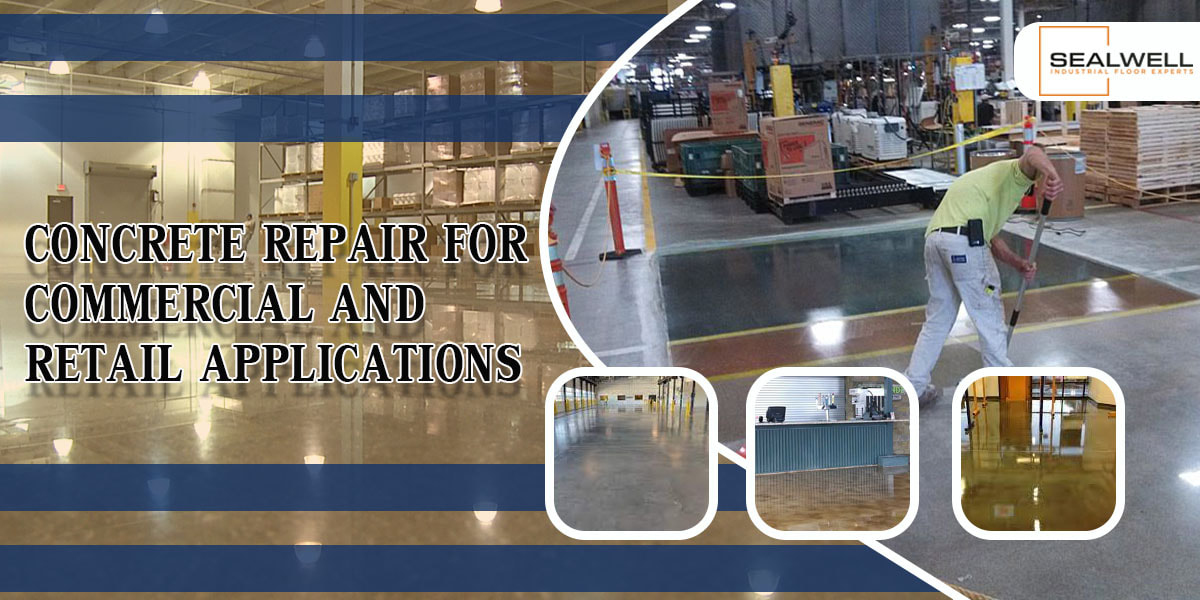Concrete Repair for Commercial and Retail Applications |
Posted: March 24, 2023 |
Concrete is a durable material, but it's not indestructible. Over time, it can crack, chip, and break, creating a safety hazard and an unsightly appearance. For commercial and retail applications, damaged concrete can turn away customers and reduce property values. In this article, we'll discuss the importance of Concrete resurfacing or concrete repair for commercial and retail applications, the common causes of concrete damage, and the different types of repair methods available.
Importance of Concrete Repair for Commercial and Retail ApplicationsCommercial and retail properties need to maintain a clean and safe appearance to attract and retain customers. Concrete damage, such as cracks, potholes, and uneven surfaces, can create a tripping hazard, which can lead to lawsuits and insurance claims. Repairing damaged concrete can also extend the lifespan of the surface, reducing the need for costly replacements. Causes of Concrete DamageThere are several causes of concrete damage, including:
Heavy foot and vehicle traffic can wear down concrete surfaces over time, creating cracks and potholes.
In areas with cold climates, concrete can expand and contract with temperature changes, leading to cracking and spalling.
Concrete can be damaged by exposure to chemicals, such as acids, alkalis, and salts, which can corrode the surface and weaken its structure.
Moisture can penetrate concrete and cause it to weaken and break down over time. This can occur due to poor drainage, leaks, or high humidity. Also read about, A Guide to Maintaining Your Warehouse Flooring for Longevity Types of Concrete Repair MethodsThere are several different types of concrete repair methods available, including:
Epoxy injection involves injecting an epoxy resin into cracks and voids in the concrete. This method can restore the structural integrity of the surface and prevent further damage.
Concrete resurfacing involves applying a thin layer of new concrete over the existing surface. This method can repair surface damage and improve the appearance of the surface.
Concrete overlay involves applying a thin layer of a decorative material, such as stamped concrete or colored concrete, over the existing surface. This method can improve the appearance of the surface and provide additional protection against damage.
Concrete grinding involves using a diamond grinder to remove the top layer of the concrete surface. This method can level uneven surfaces and remove surface imperfections. ConclusionConcrete repair is an essential part of maintaining the safety and appearance of commercial and retail properties. By understanding the common causes of concrete damage and the different types of repair methods available, property owners can make informed decisions about repairing and maintaining their concrete surfaces. FAQsQ. How long does it take to repair damaged concrete? A. The time it takes to repair damaged concrete depends on the extent of the damage and the repair method used. Some repairs can be completed in a few hours, while others may take several days. Q. Can concrete repairs be done in cold weather? A. Some concrete repair methods, such as epoxy injection, can be done in cold weather. However, other methods, such as concrete resurfacing, may require warmer temperatures. Q. How much does concrete repair cost? A. The cost of concrete repair depends on the extent of the damage and the repair method used. If you are in need of concrete repair services for your commercial or retail space, look no further than Sealwell Industrial Floor Experts. With 25 years of experience and a team of skilled professionals, they can handle any concrete repair project with ease. Contact us today to schedule a consultation. Original Source, https://bit.ly/3ZdIud6
|
|||||||||||||||||||||||||||||||||||||||||||
|
|||||||||||||||||||||||||||||||||||||||||||








